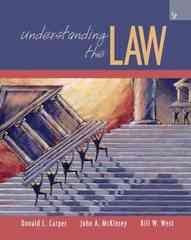Please attach the excel formula if you're using excel. Thankyou.
Purchasing a house is probably the largest single financial commitment the average person will ever make. Undoubtedly, when a person or a couple decides to purchase a house, one of the most important considerations is the financing. There are many methods of financing the purchase of residential property, each having advantages which makes it the method of choice under a given set of circumstances. The selection of one method from several for a given set of conditions is the topic of this case study. Four methods of financing, identified as plans A, B, and C, are evaluated. The major criterion used here is: Select the financing plan which has the largest amount of money remaining at the end of a 10-year period. The following is a description of the four plans: Plan Description A 30-year fixed rate of 10% per year interest, 5% down payment B 30-year adjustable-rate mortgage (ARM"), 9% first 3 years, 91/2% in year 4, 101/4% in years 5 through 10 (assumed), 5% down payment C 15-year fixed rate of 91/2% per year interest, 5% down payment D Owner financing at 81/2% per year, $20,000 down payment, with a balloon payment in year 10. Other information: a Price of the house is $150,000. House will be sold in 10 years for $170,000 (net proceeds after selling expenses). Taxes and insurance (T&I) are $300 per month. a Amount available: maximum of $40,000 for down payment, $1,600 per month, including T&I. a New loan expenses: origination fee of 1%, appraisal fee $300, survey fee $200, attorney's fee $200, processing fee $350; escrow fees $150, other costs $300. Any money not spent on the down payment or monthly payments will earn tax-free interest at 1/4% per month. Adjustable rate mortgages are tied to some index such as U.S. Treasury bonds.Case Study Exercises: 1) Answer the following questions: a) Evaluate plans A, B, C, and D based on the economic criterion described earlier and select the best nancing method. b) Construct an amortization schedule for each of the plans. 0) What is the total amount of interest paid in plan A through the 10-year period? (1) What is the total amount of interest paid in plan B through year 4? e) What is the maximum amount of money available for down payment under plan A, if $40,000 is the total amount available? f) By how much does the payment increase in plan A for each 1% increase in interest rate? g) If you want to \"buy down\" the interest rate from 10% to 9% in plan A, how much extra down payment would you have to make? 2) Use all the methods of economic analysis that you have learned so far (e.g., PWA, ACFA, RORA) to select the best nancing method. If needed, make any necessary assumptions to solve this part








